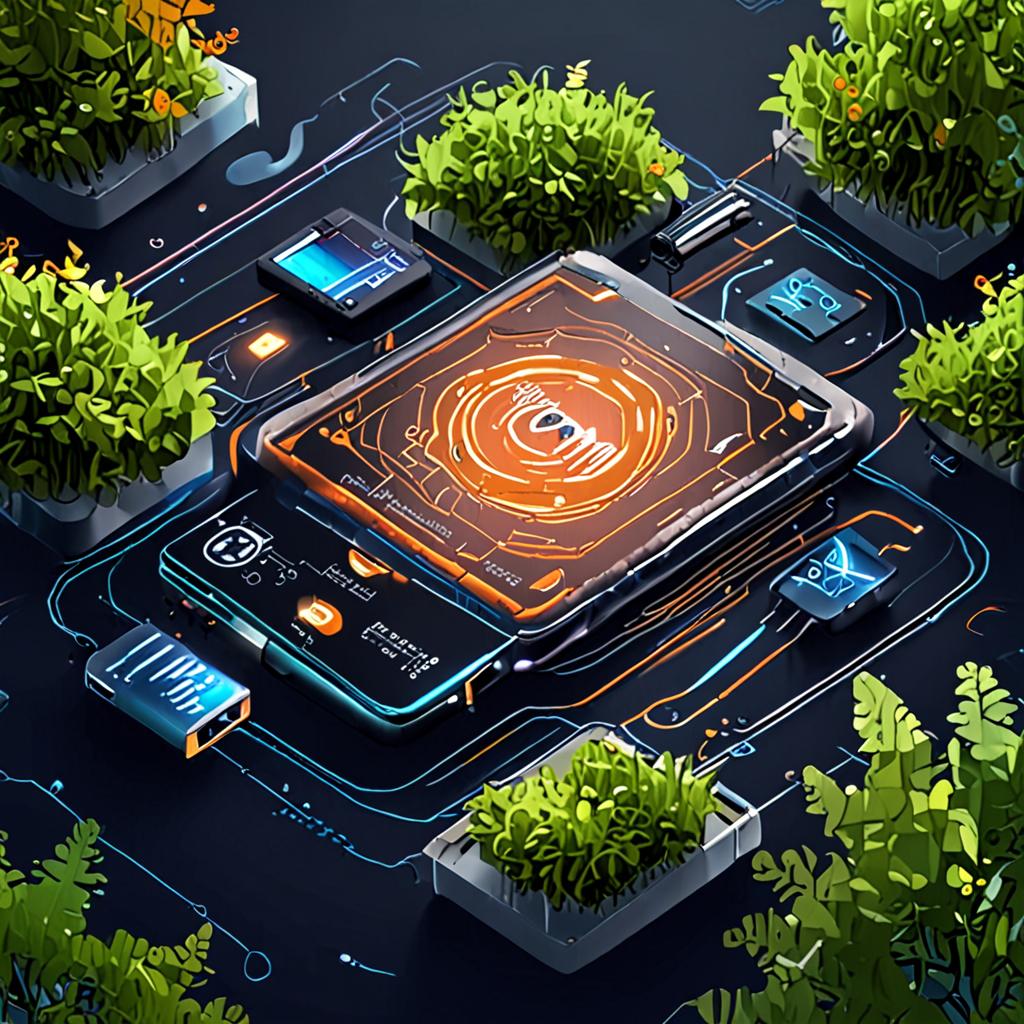Introduction
The rapid pace of smartphone innovation has led to an unprecedented rate of device obsolescence, with millions of devices being discarded each year. This not only contributes to the growing problem of electronic waste but also represents a missed opportunity for innovation. Repurposing old smartphones can breathe new life into these devices, unlocking their potential in IoT, home automation, and sustainable living applications.
However, existing methods for repurposing smartphones often rely on manual modifications, which can be time-consuming, expensive, and limited in their capabilities. For instance, a study by the United Nations University found that in 2019, only 17% of e-waste was formally recycled, with the majority of devices being improperly disposed of or stockpiled.
Artificial intelligence (AI) and machine learning (ML) can address this challenge by enabling the development of smart, automated, and scalable solutions for smartphone repurposing. Techniques such as computer vision, natural language processing, and predictive analytics can be leveraged to create innovative applications, from smart home automation to environmental monitoring. In this blog, we will explore 10 innovative ways to repurpose old smartphones, showcasing real-world examples of how AI-powered solutions can unlock the hidden potential of these devices and drive sustainable innovation.
Upcycling Smartphones for IoT Applications: A Deep Dive into Hardware and Software Modifications
Upcycling smartphones for IoT applications involves repurposing old devices as smart sensors, gateways, or edge devices, reducing electronic waste and promoting sustainable innovation. This approach matters as it enables the creation of low-cost, low-power IoT solutions, leveraging the existing hardware and software capabilities of smartphones.
For instance, a study by Ericsson found that by 2025, the number of IoT devices is expected to reach 41 billion, with a significant portion being smartphones. By upcycling these devices, we can reduce the environmental impact of IoT deployments.
To upcycle smartphones for IoT, hardware modifications may involve adding new sensors, antennas, or interfaces, while software modifications may include installing new operating systems, such as Linux or Android Things, and integrating IoT-specific protocols like MQTT or CoAP. AI plays a crucial role in driving measurable improvement in upcycled IoT devices by enabling advanced data analytics, predictive maintenance, and machine learning-based decision-making.
For example, AI-powered computer vision can be used to analyze data from upcycled smartphone cameras, enabling applications like smart surveillance, object detection, or environmental monitoring. By combining AI with upcycled IoT devices, we can unlock new
Revitalizing Home Automation: Transforming Old Smartphones into Smart Home Hubs and Controllers
Revitalizing home automation involves repurposing old smartphones as smart home hubs and controllers, unlocking a new life for discarded devices. This approach matters as it reduces electronic waste, conserves resources, and enhances the functionality of existing smart home systems.
A notable example is the “Home Assistant” project, which has leveraged repurposed smartphones to create a robust, open-source home automation platform. According to the project’s GitHub page, over 100,000 users have successfully transformed their old smartphones into smart home hubs, controlling a wide range of IoT devices.
Artificial intelligence (AI) plays a crucial role in enhancing the capabilities of repurposed smartphones in home automation. AI-powered machine learning algorithms can analyze energy consumption patterns, optimize device scheduling, and detect anomalies in the system. For instance, AI-driven predictive maintenance can help identify potential issues before they occur, reducing downtime and energy waste.
By harnessing AI and upcycling technology, repurposed smartphones can become intelligent, voice-controlled hubs, seamlessly integrating various smart devices and improving overall home automation efficiency. This innovative approach not only reduces electronic waste but also fosters a more sustainable, connected living experience.
Breathing New Life into Old Devices: Sustainable Smartphone Repurposing Strategies for Reduced E-Waste
The rapid obsolescence of smartphones has led to an alarming rise in electronic waste (e-waste). Repurposing old devices is a strategic approach to mitigate this issue, aligning with the principles of sustainable living and upcycling technology. By giving new life to discarded smartphones, we can reduce the environmental impact of e-waste, conserve resources, and unlock new functionalities.
A notable example of successful smartphone repurposing is the “Smart Garden” project, where old smartphones are converted into automated gardening systems, utilizing their sensors, cameras, and processing power to monitor and control soil moisture, temperature, and light levels.
Artificial intelligence (AI) plays a pivotal role in enhancing the effectiveness of smartphone repurposing. AI-powered algorithms can be used to:
- Optimize device performance and energy efficiency
- Develop predictive maintenance models to extend device lifespan
- Analyze sensor data for smart home automation applications
By leveraging AI, we can unlock the hidden potential of old smartphones, transforming them into valuable assets that contribute to a more sustainable and connected world. As the global smartphone market continues to grow, embracing repurposing strategies can significantly reduce e-waste and promote a
Conclusion
The strategic repurposing of old smartphones has been significantly enhanced by advancements in Artificial Intelligence (AI), enabling the creation of sophisticated IoT projects, home automation systems, and sustainable living solutions. AI-driven technologies have also improved the efficiency and effectiveness of upcycling efforts, allowing for the transformation of discarded devices into valuable tools.
As we continue to push the boundaries of smartphone repurposing, it is essential to take action and capitalize on the opportunities presented. Two practical next steps for professionals in this field are to:
- Experiment with integrating AI-powered machine learning algorithms into repurposed smartphone projects to enhance their functionality and performance.
- Adopt a design thinking approach to smartphone upcycling, focusing on user-centered design principles to create innovative, sustainable, and socially responsible solutions that meet the needs of diverse stakeholders.
By embracing these strategies, we can unlock the full potential of repurposed smartphones and drive meaningful innovation in the realms of IoT, home automation, and sustainable living.
